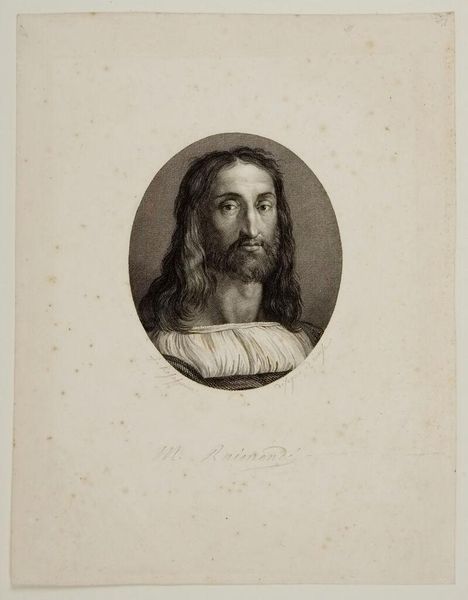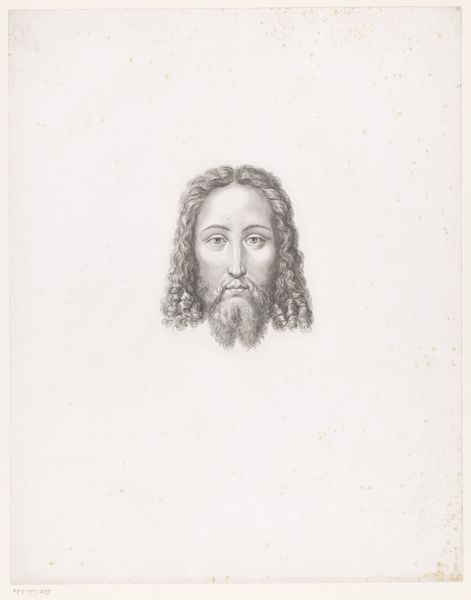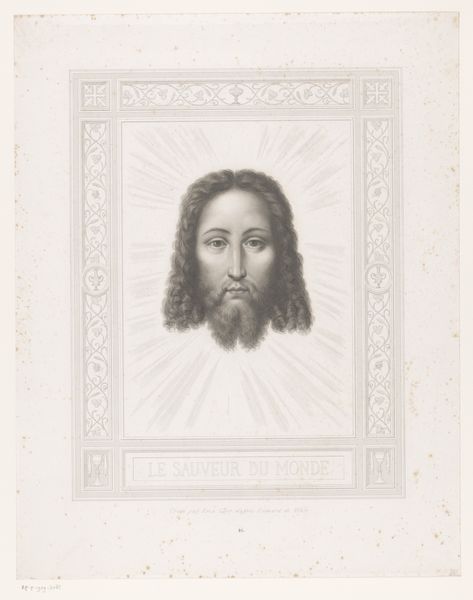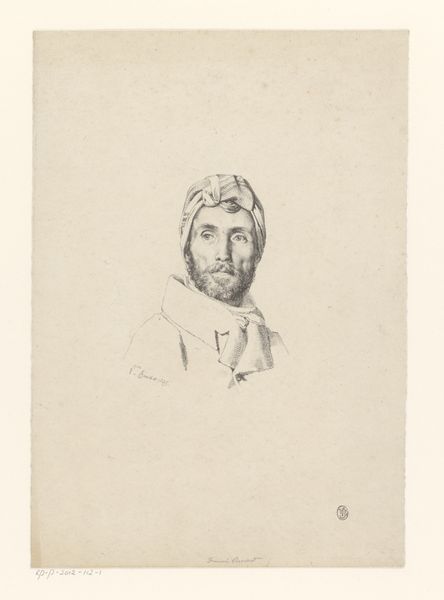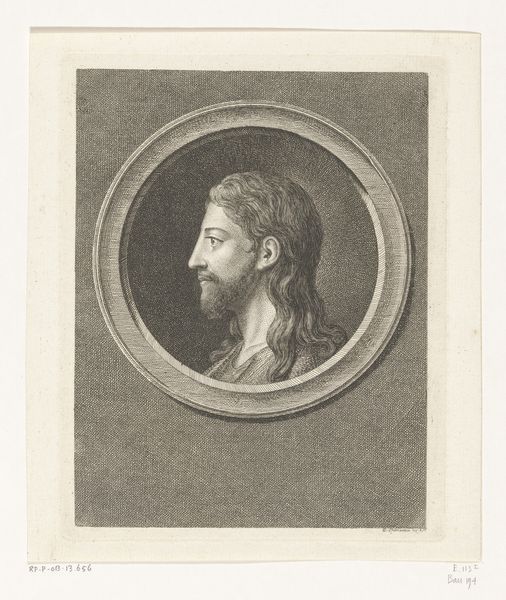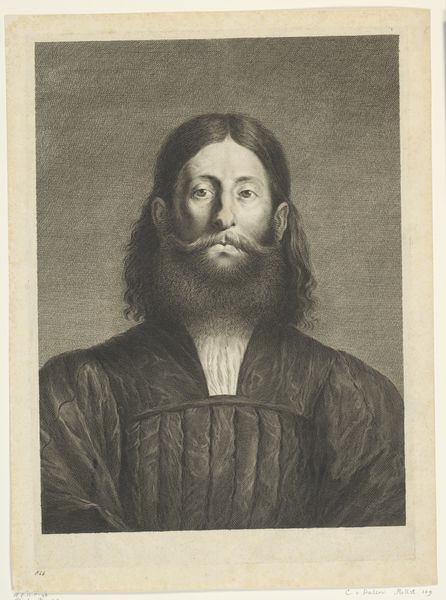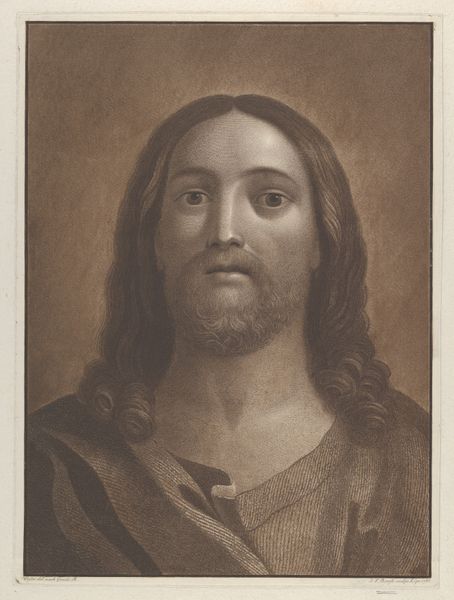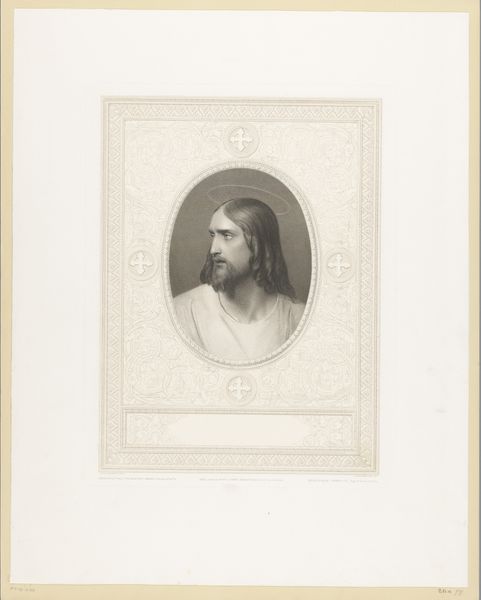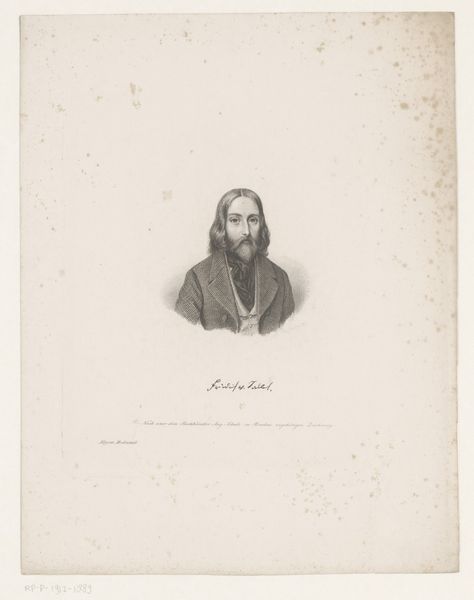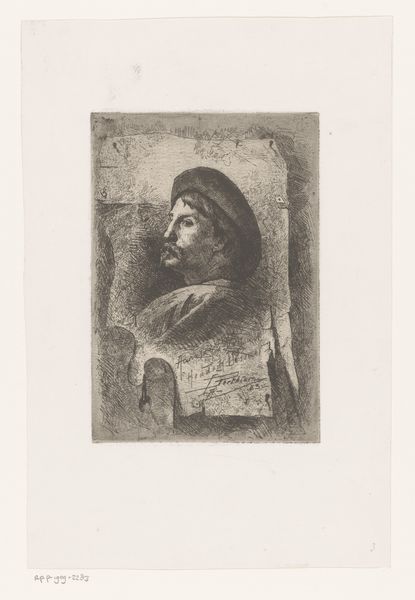
print, engraving
#
portrait
#
pencil drawn
#
16_19th-century
# print
#
engraving
#
realism
Dimensions: height 480 mm, width 324 mm
Copyright: Rijks Museum: Open Domain
Curator: It strikes me as quite serene, almost stoic. Is it just me or does this portrait emanate a contemplative aura? Editor: Indeed! What we're looking at is a print identified as "Portret van Giorgione," dating back to somewhere between 1827 and 1854. The artist behind this engraving is Nicolas Maurin. It captures Giorgione, the enigmatic Renaissance painter. The realism employed is quite striking. Curator: The clothing is particularly interesting; the pleats have such presence. Do the garments reveal something of the sitter's status or position? Editor: Certainly. Costume always signifies social placement and ideology. The Renaissance style depicted hints at a reverence for the artistic legacy of figures like Giorgione. Such works helped construct an image of artistic genius—vital in the burgeoning art market and academy. Curator: It feels like more than just documentation, though. There’s a quietness to the gaze that seems intended to evoke a sense of artistic depth. His clothing seems draped and his eyes heavy. Editor: And the reproduction aspect bears thinking about. Engravings made art accessible to a wider public, shaping popular understanding. By creating repeatable images of these artist 'celebrities' their social status also became repeatable, mobile. Curator: A cultural artifact in itself. Each line contributes to constructing an artist figure we continue to remember, debate, and reflect upon today. Editor: Precisely. Consider too, that the medium is an engraving – not simply a sketch. The decision highlights permanence, solidifying Giorgioine's position within the visual culture. It underscores his lasting legacy. Curator: It makes you consider the original portrait the print may be based on—or even whether an "original" existed at all. Perhaps this is Maurin's creative imagining, and nothing more. Editor: Right. And regardless, that choice carries consequences for how the artist is consumed and situated within an artistic canon. This image doesn't only portray a figure, but acts as a symbol of artistic veneration and marketability of the figure. Curator: So this quiet face sparks a larger conversation, echoing how cultural images resonate through history. It offers continuity. Editor: A fitting final thought. Looking at the world with intention opens doors!
Comments
No comments
Be the first to comment and join the conversation on the ultimate creative platform.

